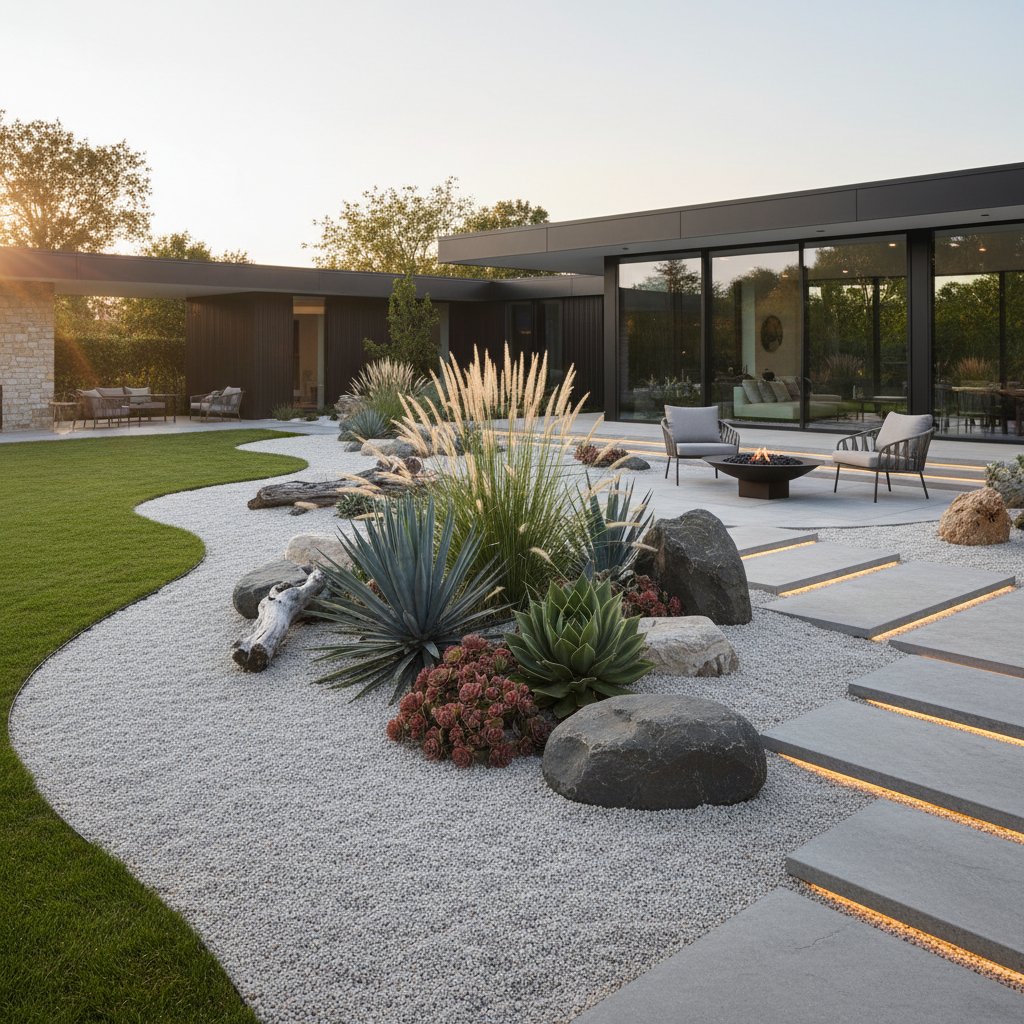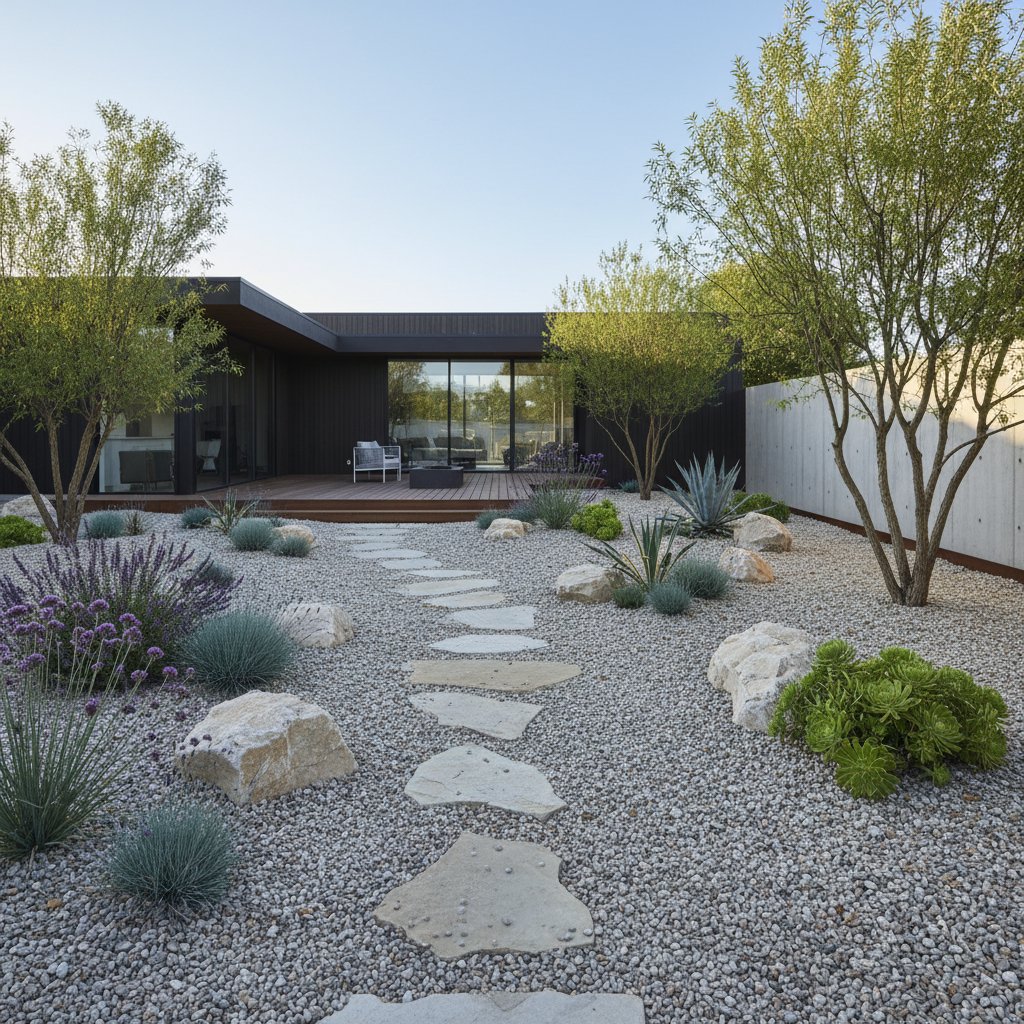Gravel Gardens: Pioneering Zero-Waste Landscaping in 2025
Gravel gardens reshape residential landscapes by prioritizing sustainability and simplicity. These designs replace conventional turf with durable stone layers and resilient vegetation, resulting in spaces that demand fewer resources and generate negligible waste. Proper execution ensures that gravel gardens rival the visual charm of manicured lawns while delivering superior environmental benefits. They prove adaptable across diverse climates and architectural styles, from arid regions to temperate zones.
Homeowners seeking a contemporary, eco-conscious outdoor area find gravel gardens ideal. The approach aligns with growing emphasis on resource efficiency, offering enduring value through reduced upkeep and long-term resilience.
The Zero-Waste Advantages of Gravel Gardens
Conventional lawns rely on materials prone to degradation, necessitating frequent interventions that produce waste and environmental strain. Turf requires consistent applications of fertilizers, herbicides, irrigation, and mechanical mowing, which contribute to pollution over time. Gravel gardens circumvent these issues through strategic material selection and installation techniques.
Key waste-reduction strategies include the following:
- Material longevity and recyclability: Gravel endures for decades without deterioration; it can be relocated, washed, and repurposed as needed.
- Efficient water management: Drought-resistant plants thrive on natural precipitation, minimizing supplemental watering requirements.
- Elimination of chemical inputs: The absence of fertilizers and pesticides prevents contamination of local waterways and soil.
- Soil preservation: A gravel overlay shields underlying earth from compaction, erosion, and nutrient depletion.
- Extended durability: Thoughtful construction yields installations that require only periodic adjustments over many years.
This methodology not only curtails expenses but also fosters a harmonious integration with natural ecosystems. For instance, in water-scarce areas, gravel gardens can reduce household water usage by up to 75 percent compared to irrigated lawns.
Evaluating Costs and Labor for Installation
Initial expenses for a gravel garden vary based on project scale and gravel variety, such as pea gravel or crushed stone. Materials and basic setup typically range from one to three dollars per square foot. Professional installation adds labor fees, elevating the total to five to eight dollars per square foot, depending on site complexity and regional rates.
In contrast to sod installation or expansive paver projects, gravel gardens present a more economical upfront investment. Ongoing costs plummet without the need for irrigation infrastructure, chemical treatments, or seasonal turf repairs. Maintenance involves sporadic weeding and surface leveling, often achievable with basic tools.
For those undertaking a do-it-yourself project, a modest 100-square-foot area can come together over a single weekend. Begin by marking the space, removing existing sod, and laying landscape fabric. Larger endeavors, incorporating features like winding paths or elevated planters, may span several days. Tools required include a shovel, wheelbarrow, and rake; sourcing gravel from local suppliers ensures affordability and quality.
Core Benefits Driving Gravel Garden Adoption
Gravel gardens deliver a spectrum of ecological and functional perks that enhance property value and owner satisfaction.
- Substantial water conservation: Established plantings rely primarily on ambient moisture, slashing irrigation needs in dry spells.
- Streamlined upkeep routines: Eliminate mowing and reseeding; address weeds promptly to maintain tidiness.
- Robust endurance: Gravel withstands foot traffic and weather extremes, requiring infrequent repositioning.
- Effective weed suppression: Install geotextile fabric beneath the gravel to block invasive growth at the root.
- Thermal regulation: Stone surfaces capture daytime warmth and radiate it gradually, stabilizing microclimates for surrounding flora.
- Versatile aesthetic customization: Integrate elements such as boulder accents, flagstone borders, or modular planters to suit personal tastes.
These attributes appeal particularly to busy professionals and environmentally aware families. In urban settings, gravel gardens mitigate heat island effects by reflecting sunlight, while rural installations support pollinator habitats through native plant selections.
Essential Maintenance Practices for Sustained Performance
Gravel gardens demand far less attention than turf alternatives, yet consistent minor efforts preserve their appeal. Schedule surface raking annually or biannually to redistribute stones and avert settling. Monitor for emerging weeds and remove them manually to prevent establishment.
Foot traffic or heavy rains may displace gravel; restore uniformity by sweeping material back into low spots. Every few years, apply a one-inch refresh layer of matching gravel to counteract gradual thinning and uphold visual depth. Select debris removal methods carefully: opt for soft-bristled brooms or low-speed leaf vacuums to avoid scattering stones.
Incorporate seasonal checks, such as inspecting plant health during growth periods. Prune overgrown specimens and divide perennials as necessary to sustain balance. These practices ensure the garden remains vibrant with minimal intervention, often totaling just a few hours per year.
Steps to Design and Implement Your Gravel Garden
Transitioning to a gravel garden involves straightforward planning to achieve a cohesive, enduring result. Assess your yard's sunlight, soil drainage, and intended use to select appropriate gravel sizes and companion plants. For sunny exposures, consider succulents like sedum or agave; shaded areas suit ferns and hostas.
Outline the project footprint and excavate to a depth of four to six inches, removing sod and roots thoroughly. Install edging materials, such as metal strips or timber, to define boundaries and contain the gravel. Layer landscape fabric over the base, securing it with stakes, then distribute gravel evenly at two to three inches thick.
Introduce plants by cutting slits in the fabric and positioning roots directly into the soil below. Water initially to settle everything, then allow natural adaptation. This process yields a functional space within weeks, evolving into a mature landscape over one to two seasons.
Realizing Lasting Value Through Gravel Gardens
Gravel gardens stand as a testament to innovative, responsible landscaping that harmonizes beauty with practicality. They conserve resources, lower financial burdens, and minimize environmental impact, creating outdoor retreats that endure. Begin with targeted additions, such as a gravel mulched planting bed, to experience the transformation firsthand. As your design matures, it becomes a cornerstone of sustainable living, rewarding with effortless elegance year after year.



